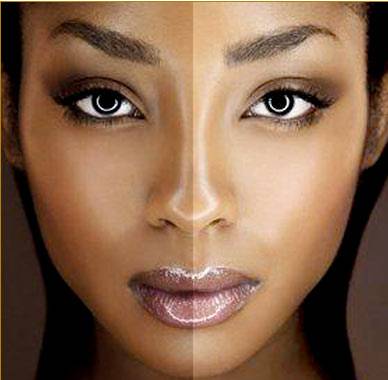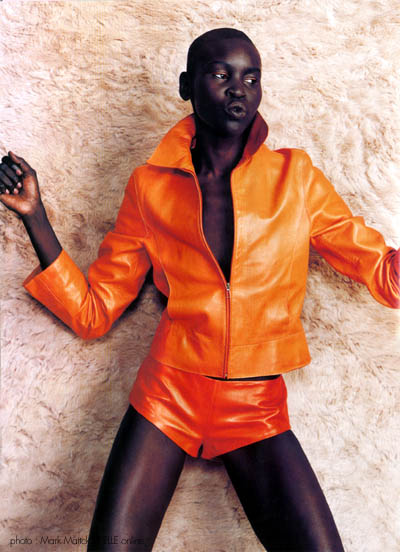 I wish I was lighter.
I wish I was lighter.
I don't like my skin.
I want a larger crease on my eyelids.
These are common complaints made by women that make up a large percentage of the ethnic groups in the United States.
Approximately 50 percent of Asians are born with eyes that have "single eyelids." This is when there is no crease that forms in the top lids when the eyes are open.
Apparently, those regarded as "most beautiful" in Asian culture have extra skin and fat, which create a hooded look. The so-called problem can easily be corrected through eyelid surgery or blepharoplasty, which creates the natural crease in the eyelid that appears when the eyes are open, but not when they are closed.
 Julio Yoo, the author of Culture Shock, a blog kept
by her and her classmates at Massachusetts Institute of Technology,
believes Koreans are among the largest group of Asians who apply standards derived directly from the Western
world - regardless of how impossible they are to attain.
Julio Yoo, the author of Culture Shock, a blog kept
by her and her classmates at Massachusetts Institute of Technology,
believes Koreans are among the largest group of Asians who apply standards derived directly from the Western
world - regardless of how impossible they are to attain.
"In Korea, a woman should be tall, thin, with a milky complexion, chiseled facial features, long legs, nice big eyes, and the perfectly-angled nose," writes Yoo. "Ann Shin's film, Western Eyes, thoroughly and accurately captures the essence of the struggle for Asian-American women striving for Western beauty. The protagonists resort to cosmetic surgery in search of beauty and acceptance, believing that their appearance, especially their eyes, will alter the way others perceive them."
Take Korean pop star Boa Kwon who now rules the female pop world in all of Northeast Asia (Japan, China and Korea). She got both the eyelid surgery and her nose heightened.
Dr. Edmund Kwan, a renowned plastic surgeon in New York City, has been getting more and more requests for this procedure from women, but especially men.
Kwan's procedure is as follows: he constricts the muscle that
opens the eye and tacks it to the tarsal plate rather than to the
skin. While he may regularly offer this service, Kwan is not one to deem Western beauty as standard.
"I believe that a beautiful face comes in all shapes and sizes. I think that’s what patients need to know," said Kwan.
And in a surprise reversal, Kwan says that he even gets some requests from patients to remove their eyelid fold.
 "I'm seeing more of it. Not a tremendous increase, but I see
some."
"I'm seeing more of it. Not a tremendous increase, but I see
some."
No surgery is risk-free and eyelid surgery is no exception. As a result of undergoing blepharoplasty, patients are at risk of experiencing swelling, infection and bleeding.
While eyelid surgery is the most popular cosmetic procedure among Asians, many are also dissatisfied with skin color - enough to use methods of lightening. Still, this phenomenon is most widely prevalent within communities of Black people around the world.
In fact, the market for skin lighteners is thriving in the U.S. and abroad. According to market research, global industry analysts sales of lightening products in the U.S. are expected to increase nearly 18 percent by 2015, reaching $76 million annually.
Isabelle Mananga-Ossey is an activist in France whom runs the non-governmental organization Beauté Noire. Her organization exposes the dangers of skin bleaching and works to ban dangerous creams.
"It is very difficult to have good positions in society in
France becau se of dark skin," said Mananga-Ossey in a NEWDradio
interview last March.
se of dark skin," said Mananga-Ossey in a NEWDradio
interview last March.
So, as an attempt to assimilate, many Black women living in France will use products that will give their skin a lighter, more socially-accepted tone.
In reality, in an attempt to lighten or whiten their skin, women may face certain health risks. Skin lightening creams are to be used on small spots to reduce scarring, but instead some individuals use it on their entire body.
According to The Chicago Tribune, consumers can't know for sure which creams are safe and which are not. There is a type of mercury used in skin lightening creams which is inorganic and is combined with chloride or iodide. In many cases, this type of mercury is transformed into methyl mercury when it enters the liver. Mercury poisoning is known to lead to psychiatric disorders as well as kidney and neurological damage.
Even though mercury is a toxic metal, it is
used because it blocks production of melanin, which gives hair and
skin their pigmentation. Though banned back in 1990 from skin
lightening/bleaching products, mercury has still been detected in creams.
"It is likely that things get past us," said FDA spokesman Ira Allen concerning the detection of mercury in skin creams.
Other harmful products found in skin bleaching products are: arsenic, alpha hydroxy acids, and hydroquinone.
Arsenic contains harmful chemicals used in pesticides and herbicides. It is a deadly ingredient that can result in bladder, lung, prostate, liver, kidney and skin cancer.
Alpha hydroxy is a component of facial chemical peels. Plastic
surgeons generally use facial chemical peels if the patient suffers
from a serious skin problem. Chemical facial peels are tailored for
professional use and are generally done infrequently; it should not
be performed at home. Hydroquinone was banned in France due to cancer
risks. Many skin-bleaching creams contain hydroquinone, which is also
used in film deve loping products.
loping products.
Why is there an emphasis on looking different than
what we were created to be? Has society played a role in creating the ideal
"beautiful” woman? Is a Euro-centric look more widely accepted? Amy Mbaye, who is an African woman living in Paris, used to use bleaching creams for many years because she thought that she was too black. "You start using these products to
become beautiful, people find that you’ve changed, that you have become
prettier. That’s the reason why I started. Also partly because of my family –
my sisters used it too, so I picked it up,” said Mbaye. Once her son was born, though, Amy was alarmed at the damaging effects her bleaching habit was having on her body. "When I had a caesarian, the skin
didn’t grow back together, so the doctors even had to put stitches in so the
cuts could join. If it happened in Africa, I
would have died." Today, Amy has overcome this disdain for her darker
complexion.

